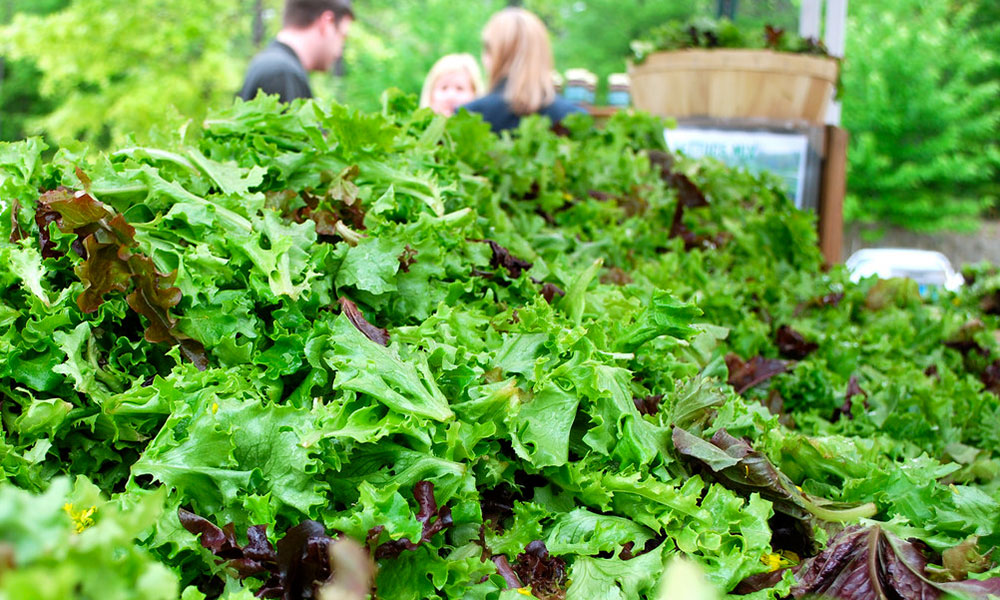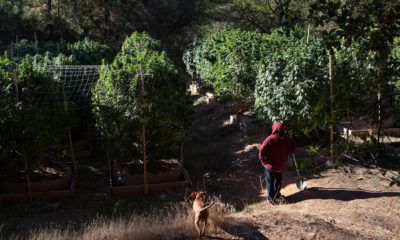
Legal
In California, Cannabis Beats Traditional Agriculture on Pesticide Safety Compliance
Turns out holding their crop to a — sorry! — higher standard isn’t enough to stop cannabis farmers from complying with state law better than some more established agricultural entities.
For farmers in California’s emergent legal market, it’s not easy being green enough to comply with the state’s pesticide regulations, especially when it seems like there is little framework for them to do so. But despite all that doom and gloom, some recently released reports have shed some light on the topic, and surprisingly, even though cannabis farmers do not have any of the perks enjoyed by traditional agriculture, they are actually more compliant with state safety guidelines than their non-cannabis counterparts.
On Dec. 27, the California Department of Pesticide Regulation (CDPR) released a market analysis looking for pesticide contamination in fruits and vegetables. Out of the 3,695 samples they looked at, the CDPR found “[96 percent] had no detectable pesticide residues or residue levels at or below U.S. EPA tolerance levels.” While a 4 percent rate of non-compliance may sound good, things get really interesting when you compare it to what we have seen in the nascent adult-use cannabis industry.
In 2017, the Bureau of Cannabis Control (BCC) released two semiannual reports looking at cannabis testing results. During the first half of 2017, out of 10,695 samples examined, only 403 cannabis products failed for having above the allowed limit of residual pesticides, about 3.7 percent of the samples tested. From July 1 through Nov. 30, the BBC looked at 23,864 product batches, and just over 700 failed for pesticides, only 2.9 percent. Given that the BCC’s smallest sample size was three times the size of the CDPR sample, there should be little doubt about the accuracy of the BCC’s findings.
California Cannabis: The State’s Cleanest Agricultural Product
That means that California’s cannabis industry, a two-year-old newly regulated and legalized market, has already attained a higher degree of compliance than traditional agriculture, with a 1.1 percent lower rate of illegal pesticide exposure. Even more impressively, the cannabis industry has done that without access to banks, without farm loans, without federal crop insurance and while fighting off 280E lawsuits and wildfires. Clearly, if struggling mom and pop cannabis businesses can manage that high degree of compliance, we should expect more from our non-cannabis farmers, big and small alike.
It’s also important to note that the CDPR tracked where products originated, so the fairest point of comparison for California’s cannabis farmers is to other products from California. Over a quarter of samples of domestic produce the CDPR looked at, 563 products, came from California, and out of those 5.3 percent had illegal residues. So really, California’s cannabis is 2.4 percent cleaner than the rest of agricultural products produced in-state.
How Do Testing Limits for Traditional Agriculture Compare to Cannabis?
Sources ranging from the Associated Press to the Eureka Times Standard have reported on the burdensome pesticide regulations which have hamstrung California’s cannabis industry. In a recent interview with Tim Blake, the founder of the Emerald Cup, Blake told Cannabis Now that cannabis testing was “very restrictive testing compared to traditional agriculture, nothing could pass it.”
In fact, California’s pesticide testing tolerances for cannabis are some of the strictest in the world, but how strict is that compared to the 2014 EPA tolerance guidelines with which the CDPR must comply? The BCC has two categories of pesticides, Category 1, which are banned pesticides with no allowable residual, and Category 2, which have set tolerances for inhaled cannabis and other product categories.
The EPA’s tolerance levels, on the other hand, can be dramatically different depending on what type of product you are looking at, and the whole range will be provided. For example, the EPA’s tolerance limit for methomyl ranges from 0.1 ppm, for products like dry beans, lentils, or corn, to as high as 40ppm for bermudagrass hay (which is likely not intended for human consumption). This means that pesticide-tainted cannabis would, in some cases, be more likely to be flagged as non-compliant than traditional agricultural products. Just more food for thought.
Cannabis Experts Weigh In
Dr. Jeffrey Raber is the CEO and CVO of The WercShop and personally understands the risks that residual pesticides can pose to cannabis consumers. In 2013, the WercShop released a study showing that almost 70 percent of pesticides could pass through to a pipe and into the consumer. Cannabis Now reached out to Dr. Raber for his thoughts on how well the cannabis industry is doing with pesticide compliance. “I think it is a wonderful display of adaptability coupled to compliance-minded operators who aim to provide only the best agricultural and processed products to this emerging cannabis market,” said Dr. Raber.
“Cannabis operators know they face tremendous regulatory scrutiny for product purity,” he said. “These failures, even while lower comparatively, were caught by testing before hitting the retail shelves.” That point, that these failures were caught before they were sold, is a very important point to highlight, as the products sampled by the CDPR were tests of products already being distributed or sold on store shelves or at farmers markets.
“California cannabis consumers can acquire products through this system with confidence and should be proud to see their state leading the way in cannabis consumer protection,” said Dr. Raber. “Perhaps other industries will take note and realize independent testing programs can lead to excellent supply chain controls that serve to elevate consumer confidence.”
TELL US, what other lessons could Big Agriculture learn from watching the cannabis industry?
























